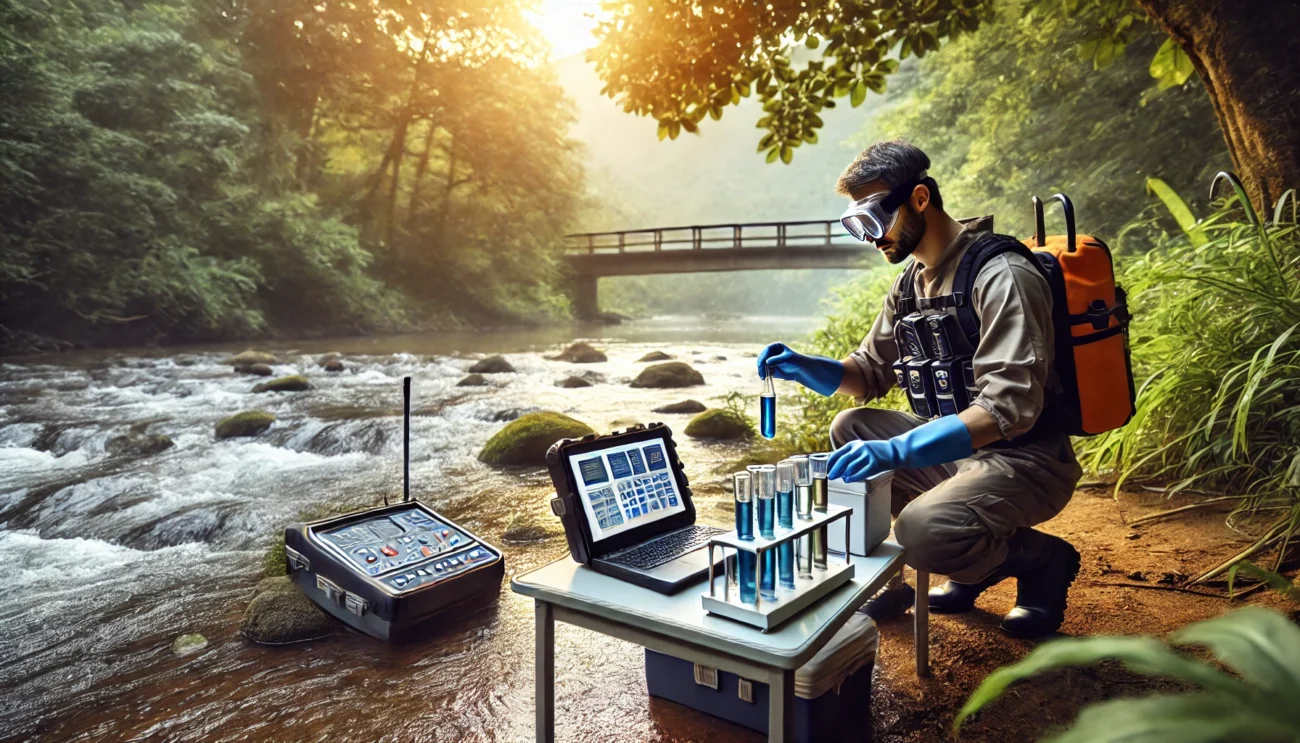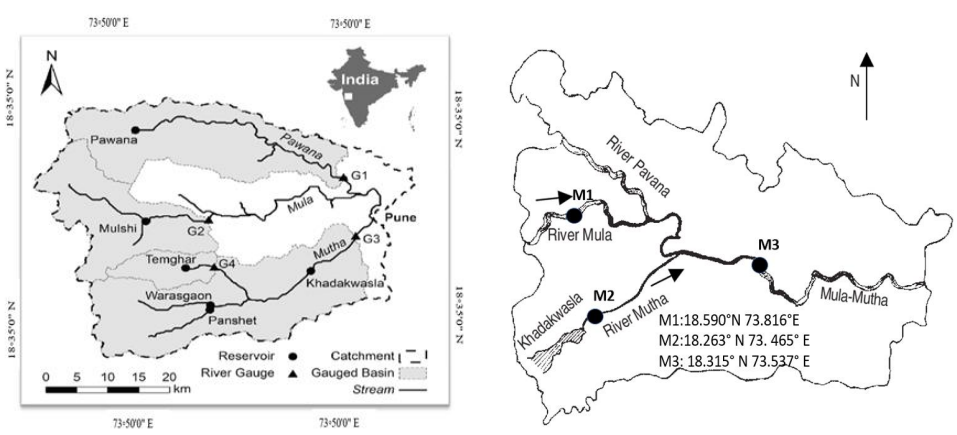Imagine a river choked with organic waste—sewage, agricultural runoff, or industrial discharge. As bacteria break down this waste, they consume oxygen, turning the water into a lifeless zone for fish and plants. Chemical Oxygen Demand (COD) measures how much oxygen is needed to chemically break down all organic matter in water. High COD levels signal severe pollution, making it a vital metric for environmental agencies.
We all know clean water is essential. But keeping our rivers healthy is a complex challenge. There are so many things that can affect water quality, from industrial runoff to agricultural practices, and even just the natural breakdown of leaves and organic matter.
Think of COD as a measure of how much “stuff” is in the water that can consume oxygen. High COD levels mean there’s a lot of oxygen being used up, which can be bad news for fish and other aquatic life.
Traditionally, measuring COD has been a time-consuming and potentially risky process involving chemicals and high temperatures. But what if we could predict COD levels using smart technology? That’s where Artificial Intelligence (AI) comes in.
A study conducted by Pali Sahu, Shreenivas N Londhe, and Preeti S Kulkarni from Vishwakarma Institute of Information Technology (VIIT), Pune, India, explored how different AI techniques can predict Chemical Oxygen Demand (COD) levels in rivers, specifically focusing on the Mula, Mutha, and Mula-Mutha rivers in Pune. The research examined three specific AI methods: Artificial Neural Networks (ANN), Multi-Gene Genetic Programming (MGGP), and Model Tree (M5T).
ANNs are modelled after the human brain and excel at recognizing complex, non-linear relationships in data, making them ideal for understanding the various factors affecting water quality that do not follow straightforward patterns. ANN utilizes feedforward technique in which data is fed through the network where the output is compared to actual COD level, such that the network adjusts its internal weights to reduce errors.
Multi-Gene Genetic Programming (MGGP) stands out because it generates mathematical equations, providing insights into the important factors influencing COD levels and their interrelations. It starts with a population of random equations, tests them against historical data, and selects the “fittest” equations (the ones that best predict COD levels). These equations are then “bred” together, with some random mutations thrown in, to create a new generation of equations. This process continues until MGGP finds an equation that accurately predicts COD.MGGP uses genetic operators like reproduction, crossover, and mutation to evolve the population of equations. It uses multiple “genes” that are combined to form the final equation.
Meanwhile, Model Tree (M5T) combines the simplicity of decision trees with the robustness of linear regression, allowing for a breakdown of the problem into manageable parts and the creation of tailored predictive models for different scenarios. Overall, the study highlights not only the specific strengths of each AI method but also their broader applicability to river systems worldwide. Model Tree (M5T) combines the simplicity of decision trees with the robustness of linear regression, allowing for a breakdown of the problem into manageable parts and the creation of tailored predictive models for different scenarios. Overall, the study highlights not only the specific strengths of each AI method but also their broader applicability to river systems worldwide. It creates a decision tree that splits the data into different branches based on different factors. At the end of each branch, there’s a linear regression model that predicts COD levels based on the specific conditions in that branch.
The study conducted a comprehensive analysis over a span of 15 years, from 2003 to 2018, focusing on three distinct stretches of river that exhibit varying levels of pollution and environmental conditions. The first stretch, the Mula River upstream, is characterized as relatively clean, serving as a crucial benchmark for assessing water quality. In contrast, the Mutha River midstream presents a scenario of moderate pollution, reflecting the impacts of urban runoff and industrial discharges that accumulate as water flows downstream. Finally, the Mula-Mutha Confluence downstream is marked by heavy pollution, indicating significant degradation of water quality due to increased anthropogenic activities and inadequate waste management practices.
The study employed several key input variables to evaluate the water quality across these river stretches: Biochemical Oxygen Demand (BOD), pH, Dissolved Oxygen (DO), electrical conductivity (EC), nitrates, temperature, and Total Dissolved Solids (TDS). BOD serves as an indicator of organic matter present in the water, while pH levels reflect the acidity or alkalinity of the water, which can significantly impact aquatic life. Dissolved Oxygen is critical for the survival of aquatic organisms, with lower levels often signifying pollution. Temperature influences both the physical and chemical processes occurring in the water, and higher temperatures can exacerbate the effects of pollution. Electrical conductivity (EC) and nitrates are key indicators of water quality. EC measures the water’s ability to conduct electricity, reflecting dissolved ions from natural sources or pollution. High EC suggests contamination from industrial waste, agriculture, or saline intrusion, while low EC may indicate a lack of essential minerals. Nitrates, mainly from fertilizers and sewage, can cause eutrophication and health risks like blue baby syndrome. Finally, TDS measures the combined content of all inorganic and organic substances dissolved in the water, providing insight into its overall quality. Through this data analysis, the study aims to highlight the varying degrees of pollution along the river stretches, offering valuable information for future environmental management and policy-making initiatives.
The study demonstrated that both Artificial Neural Networks (ANN) and Multi-Genetic Programming (MGGP) exhibited exceptional performance in predicting Chemical Oxygen Demand (COD) levels in rivers. The analysis revealed a strong correlation between the predicted COD values from these models and the observed values collected from water quality measurements. Specifically, both ANN and MGGP achieved impressive correlation coefficients exceeding 0.88, which signifies a robust and reliable relationship between the predicted outcomes and actual COD levels in various river systems.
Notably, MGGP showcased a distinct advantage by not only delivering accurate predictions but also generating easily interpretable mathematical equations. These equations offer insights into the key factors influencing COD levels, thereby facilitating a better understanding of the underlying processes affecting water quality.
Additionally, the use of the M5T model contributed valuable insights by identifying the significant variables that impact COD. This identification process is crucial for water quality management strategies, as it enables stakeholders to prioritize interventions and make informed decisions aimed at improving and safeguarding water quality in riverine ecosystems. Overall, the findings underscore the effectiveness of these AI models in advancing our understanding and management of river health.
The ability to predict Chemical Oxygen Demand (COD) levels using AI has significant real-world applications. It enables the creation of early warning systems for water pollution, optimizes wastewater treatment processes, and helps identify sources of pollution. Additionally, accurate COD predictions can guide policy decisions regarding water quality management, allowing for better regulatory assessments. Furthermore, AI models provide a cost-effective alternative to traditional COD testing, reducing the need for frequent laboratory analyses and saving valuable time and resources.
In conclusion, predicting COD levels using AI is not just a scientific curiosity; it’s a practical tool that can help us protect our rivers and ensure that everyone has access to clean water. By using AI to monitor water quality, optimize treatment processes, and identify pollution sources, we can create a healthier and more sustainable future for our planet.
This research highlights the potential of AI to transform the way we manage our water resources. As AI technology continues to evolve, we can expect to see even more innovative applications that help us protect our rivers and ensure a sustainable water future for all. It’s a future where technology and environmental stewardship go hand in hand, creating a win-win for both people and the planet.
Reference
Sahu, P., Londhe, S. N., & Kulkarni, P. S. (2023). Soft Computing Techniques for Predicting Chemical Oxygen Demand in River Water. Journal of Soft Computing in Civil Engineering, 7(4), 110-131.10.22115/scce.2023.366329.1544
Jingsheng C, Tao Y, Ongley E. Influence of High Levels of Total Suspended Solids on Measurement of Cod and Bod in the Yellow River, China. Environ Monit Assess 2006;116:321– 34. https://doi.org/10.1007/s10661-006-7374-2
Palani S, Liong S-Y, Tkalich P. An ANN application for water quality forecasting. Mar Pollut Bull 2008;56:1586–97. https://doi.org/10.1016/j.marpolbul.2008.05.021
Maier HR, Dandy GC. Neural networks for the prediction and forecasting of water resources variables: A review of modelling issues and applications. Environ Model Softw 2000;15:101–24. https://doi.org/10.1016/S1364-8152(99)00007-9
Ozkan O, Ozdemır O, Azgın ST. Prediction of biochemical oxygen demand in a wastewater treatment plant by artificial neural networks. Asian J Chem 2009;21:4821–30.
Kulkarni P, Londhe SN, Dixit PR. A comparative study of concrete strength prediction using artificial neural network, multigene programming and model tree. Chall J Struct Mech 2019;5:42. https://doi.org/10.20528/cjsmec.2019.02.002


